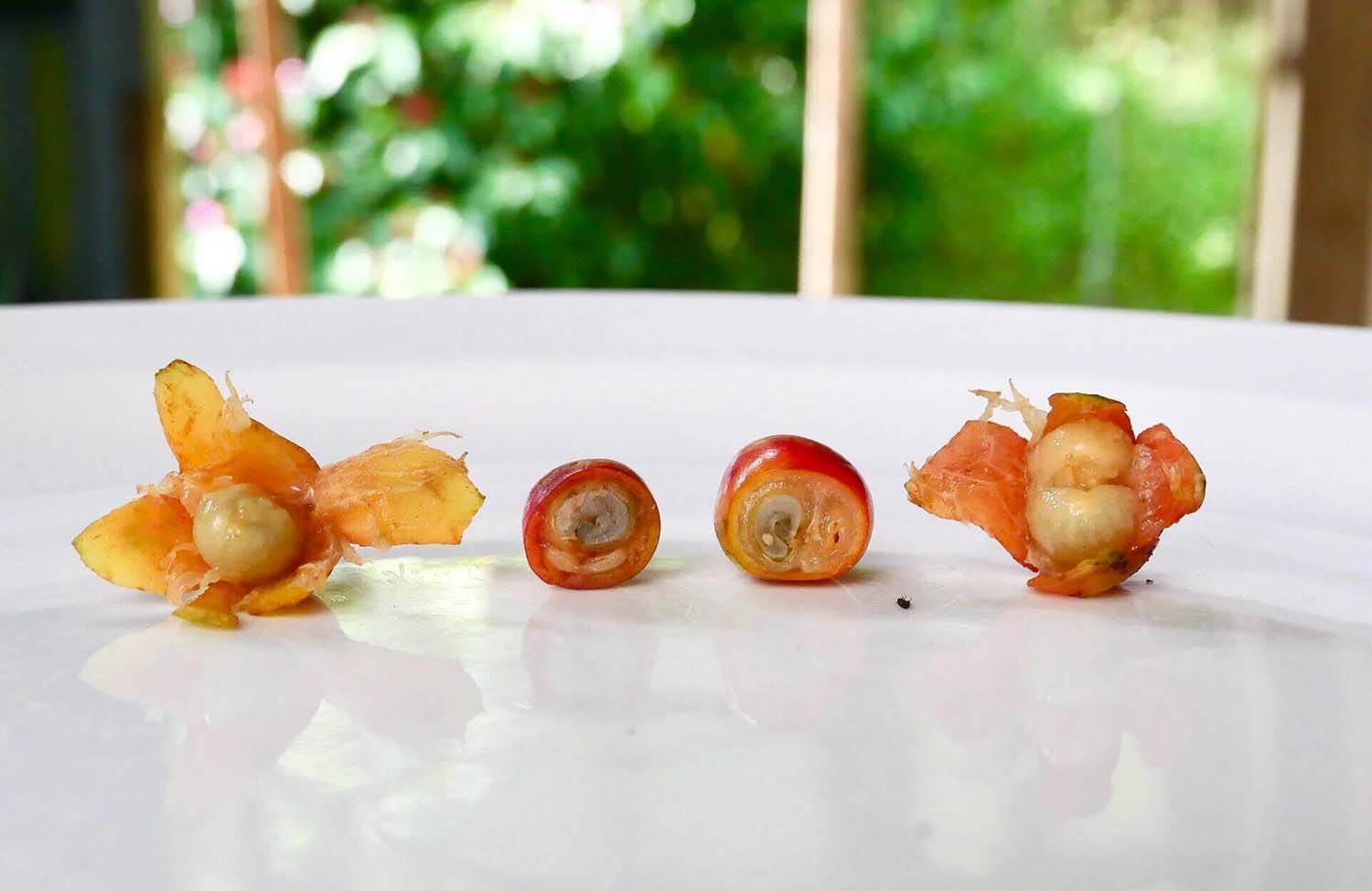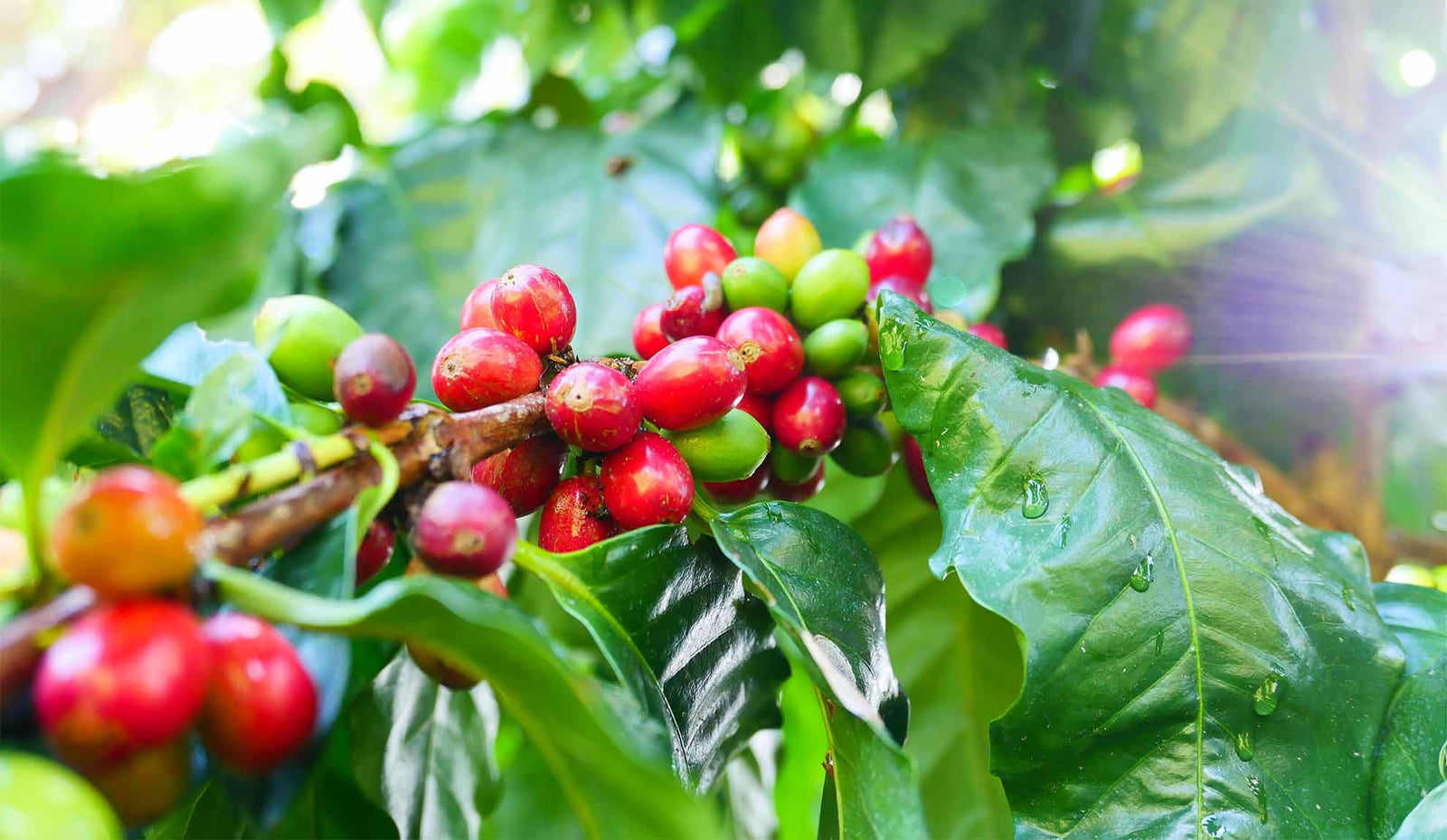Although no studies have measured Hawaiian coffee’s carbon footprint, being vertically integrated and sourcing from nearby farms reduces our overall emissions in delivering roasted to coffee to U.S. / Hawaii customers by an estimated 8-10%.

As lovers and consumers of coffee,the responsibility to lower coffee’s carbon footprint rests on all of our shoulders. To continue enjoying and exploring coffee sustainably, we are committed to finding ways to improve our own practices as we grow as a business, and to sharing ways that you can also improve yours.
In examining the overall carbon footprint of coffee,research performed on the supply chain in Costa Rica shows that consumption of coffee accounts for themost intensive source of emission and therefore has the greatest impact on the overall carbon footprint (view the infographic above for a breakdown). That’s because emissions largely come from the energy required to prepare coffee, with espresso machines being the most intensive.
Interestingly, coffee packaging accounts for only 3% of the total carbon footprint -- 1/3rd of the emissions created by export and distribution.
Credit: Carbon Footprint Across the Coffee Supply Chain: The Case of Costa Rican Coffee
Carbon Footprint of Hawaiian Coffee
Although no studies have measured Hawaiian coffee’s carbon footprint, being vertically integrated and sourcing from nearby farms reduces our overall emissions in delivering roasted to coffee to U.S. & Hawaii-based customers by an estimated 8-10%. This estimation is based on research performed on the coffee supply chain in Costa Rica.
The water used in coffee processing also contributes to the overall carbon footprint. Fortunately, many small coffee farms in Hawaii utilize rain water for coffee processing or fertigation. Our farm, mill and roastery is entirely supplied by rainwater through 2 x 15,000 gallon catchment tanks. The farm that produces our Kona Peaberry utilizes rainwater to fertigate his entire lot of 400,000 coffee trees.
Additionally, our business runs on 100% renewable electrical energy, and we use sheep instead of glyphosate to eliminate weeds and mow our small farm.
4 TIPS FOR REDUCING THE CARBON FOOTPRINT OF COFFEE
TIP 1: Use renewable energy sources
If you don’t have direct access to renewable power, numerous carbon offset programs are available to support and show demand for renewable energy. Most are surprisingly affordable.
Utilizing renewable energy -- either directly or through offset programs -- is the single largest way to reduce coffee’s carbon emissions in consumption.
TIP 2: Use non-dairy milk alternatives
According to Oxford University, cow’s milk has at least triple the negative environmental impacts compared to non-dairy milk. Alternative milk options seem to both improve and grow year after year. If you’re a dedicated dairy lover, we urge you to try something new for a few weeks. If you haven't tried oat milk yet, give it a try! We prefer sugar-free. It's one of the best subs for dairy we've had.
TIP 3: Batch cold brew your coffee
If you don’t have access to renewable energy or you just aren’t ready to make the shift to an offset program, removing any power needs from your brewing method helps.
New to cold brew? Check out our video guide for making ah-mazing cold brew at home with Maui Mana.
TIP 4: Buy local, and as close to farmer direct as makes sense.
The most important thing to understand is that we’re all in this together as one big coffee loving community. Though the undertaking is massive, the work is done step by step. Let us know what’s working for you, and share your coffee sustainability tips with us on social media at @bigislandcoffeeroasters 🐗
Espresso pour photo credit: The Curb





